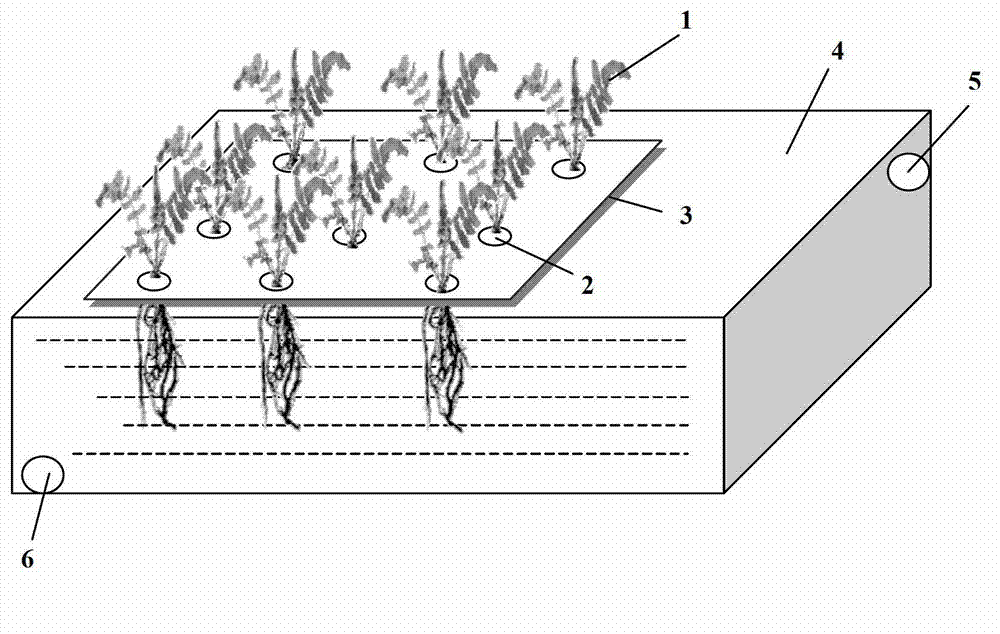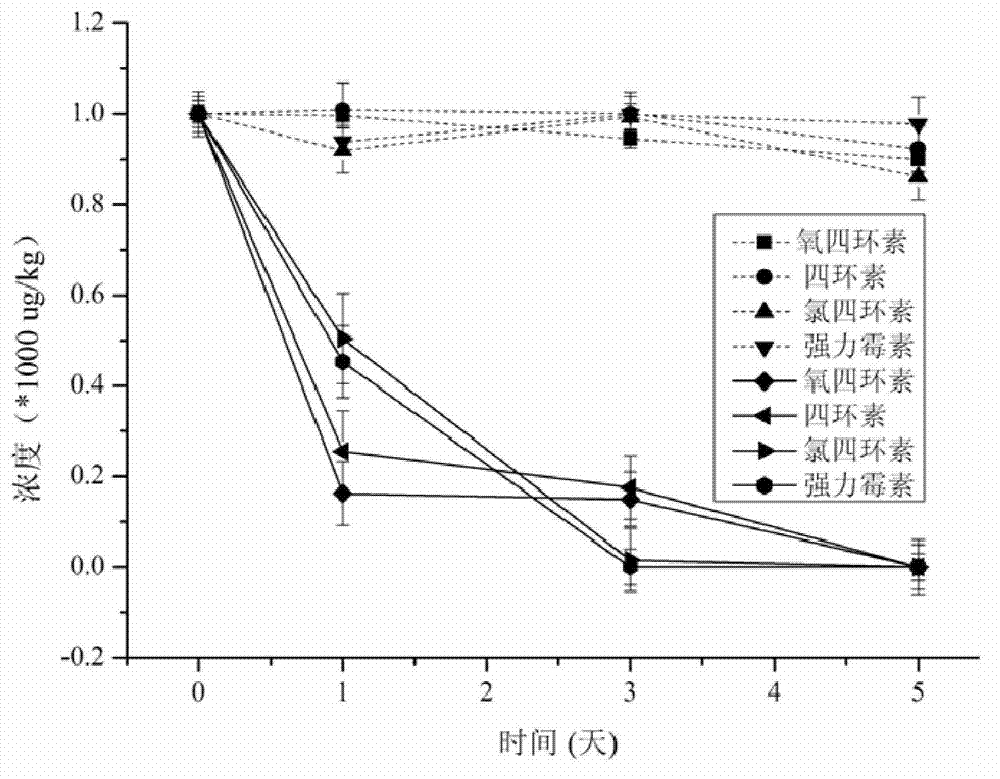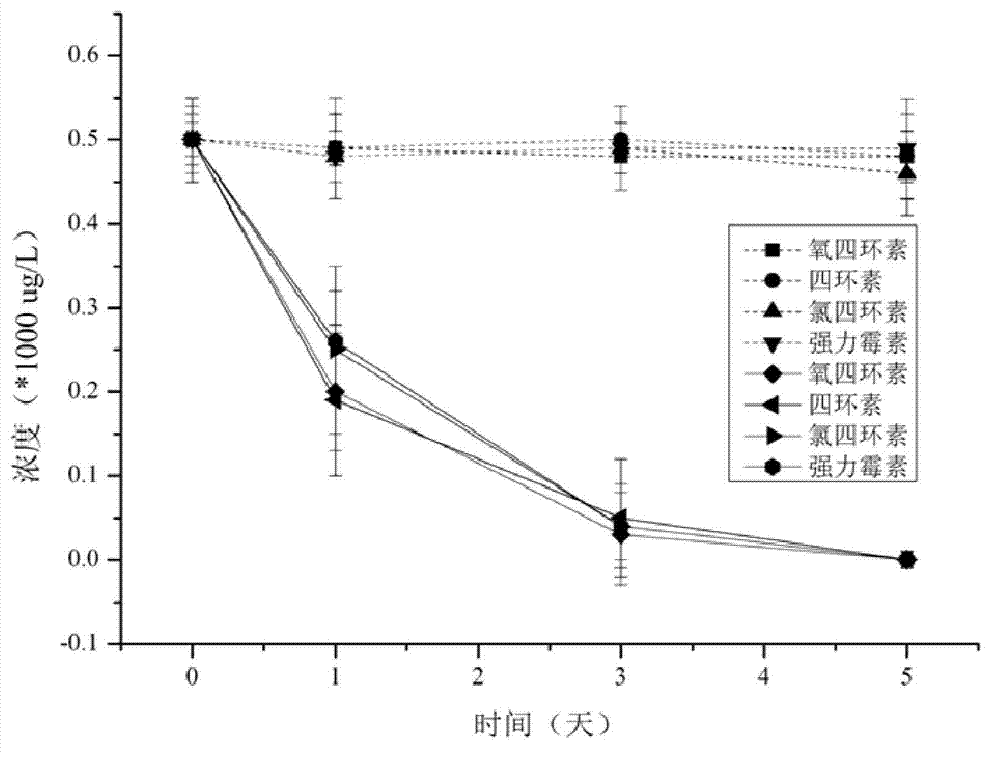Plant restoration method of tetracycline-polluted wastewater
A phytoremediation and tetracycline technology, which is applied in the field of phytoremediation of tetracycline-contaminated wastewater and environmental remediation, can solve the problems of no tetracycline antibiotics, high energy consumption, and difficult treatment, and achieve low maintenance, good effect, and wide application range wide effect
- Summary
- Abstract
- Description
- Claims
- Application Information
AI Technical Summary
Problems solved by technology
Method used
Image
Examples
Embodiment 1
[0039] A Phytoremediation Method for Contaminated Wastewater Containing Tetracycline Concentration of 1000μg / L
[0040] (1) Discharge the tetracycline-contaminated wastewater to be treated in the storage tank. The depth of the storage tank is 1.3m, and the length and width are designed according to the actual wastewater discharge;
[0041] (2) Choose a flat polystyrene foam with a thickness of 3.0cm to make a floating bed. The width of the floating bed is the same as the width of the storage tank, and the length is smaller than the length of the storage tank. Holes are punched on it with a diameter of 0.8cm and the distance between adjacent holes is 15cm. , distributed in a rectangular array, plant 1-2 centipede grasses in each hole, and fix the roots with a sponge plug;
[0042] (3) Place the floating bed made in step (2) in the water storage tank, so that the root system of the centipede grass is completely immersed in the water body, and the upper part of the centipede gras...
Embodiment 2
[0044] Embodiment 2, to the phytoremediation method that is 500 μ g / L polluted waste water to containing tetracycline concentration
[0045] (1) Discharge the tetracycline-contaminated wastewater to be treated in the storage tank. The depth of the storage tank is 1.5m, and the length and width are designed according to the actual wastewater discharge;
[0046] (2) Choose a flat polystyrene foam with a thickness of 3.0cm to make a floating bed. The width of the floating bed is consistent with the width of the water storage tank, and the length is smaller than the length of the water storage tank. Holes are punched on it with a diameter of 1.0 cm and the distance between adjacent holes is 14 cm. Distributed in a rectangular array, plant 1-2 centipede grasses in each hole, and fix the roots with a sponge plug;
[0047] (3) Place the floating bed made in step (2) in the water storage tank, so that the root system of the centipede grass is completely immersed in the water body, and...
Embodiment 3
[0049] Embodiment 3, to the phytoremediation method that is 500 μ g / L polluted waste water to containing tetracycline concentration
[0050] (1) Discharge the tetracycline-contaminated wastewater to be treated in the storage tank. The depth of the storage tank is 1m, and the length and width are designed according to the actual wastewater discharge;
[0051] (2) Choose a flat polystyrene foam with a thickness of 3.0cm to make a floating bed. The width of the floating bed is the same as the width of the water storage tank, and the length is smaller than the length of the water storage tank. Holes are punched on it with a diameter of 1.0 cm and the distance between adjacent holes is 15 cm. , distributed in a rectangular array, plant 1-2 centipede grass in each hole, and fix the roots with a sponge plug;
[0052] (3) Place the floating bed made in step (2) in the water storage tank, so that the root system of the centipede grass is completely immersed in the water body, and the u...
PUM
| Property | Measurement | Unit |
|---|---|---|
| thickness | aaaaa | aaaaa |
| thickness | aaaaa | aaaaa |
Abstract
Description
Claims
Application Information
 Login to View More
Login to View More - R&D
- Intellectual Property
- Life Sciences
- Materials
- Tech Scout
- Unparalleled Data Quality
- Higher Quality Content
- 60% Fewer Hallucinations
Browse by: Latest US Patents, China's latest patents, Technical Efficacy Thesaurus, Application Domain, Technology Topic, Popular Technical Reports.
© 2025 PatSnap. All rights reserved.Legal|Privacy policy|Modern Slavery Act Transparency Statement|Sitemap|About US| Contact US: help@patsnap.com



